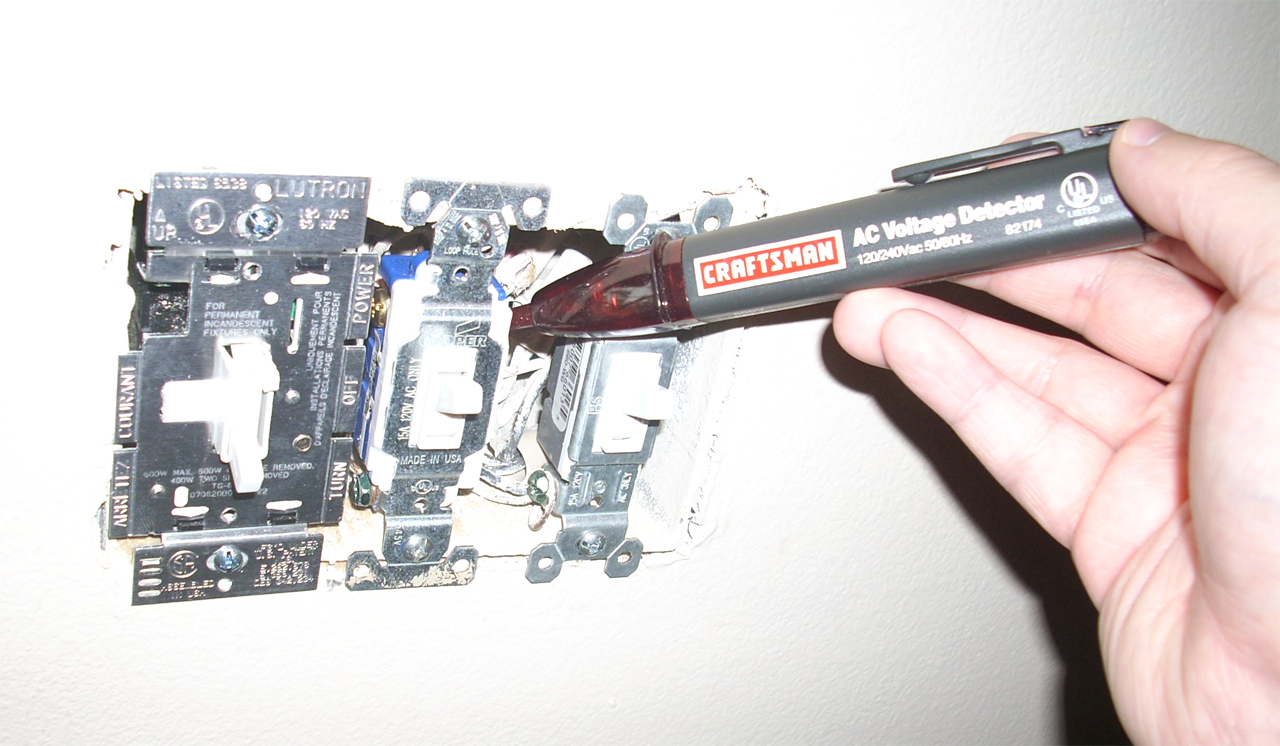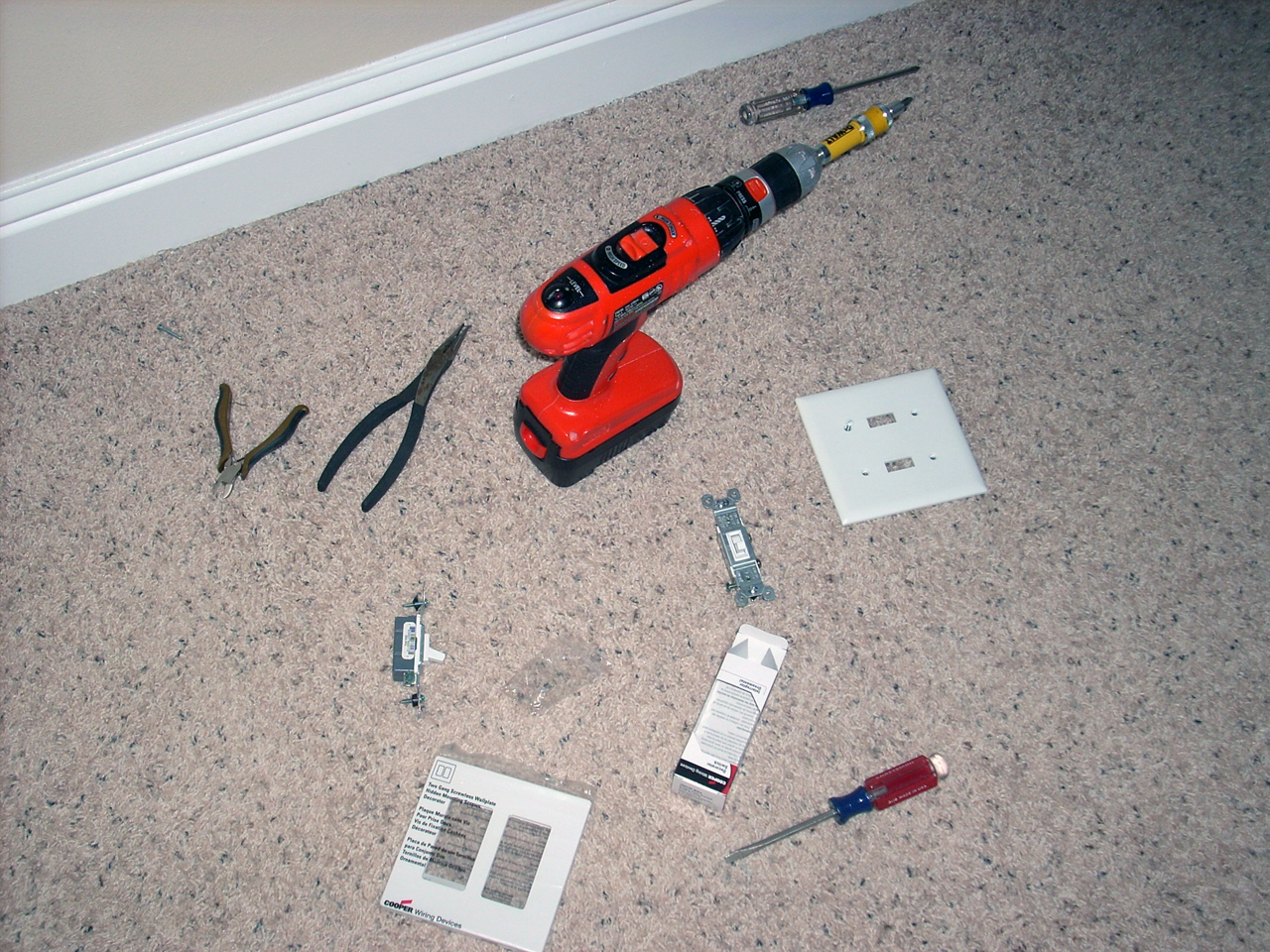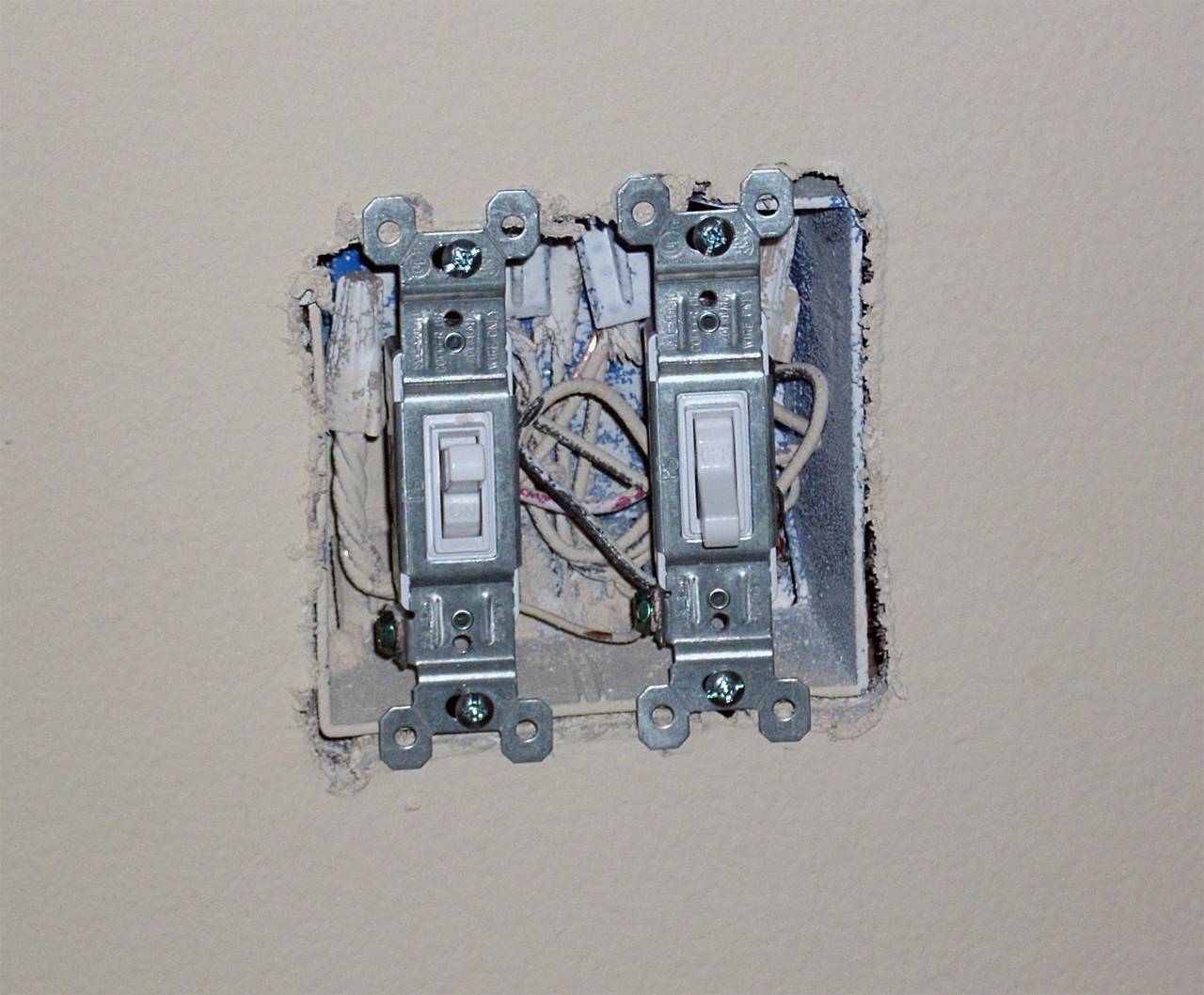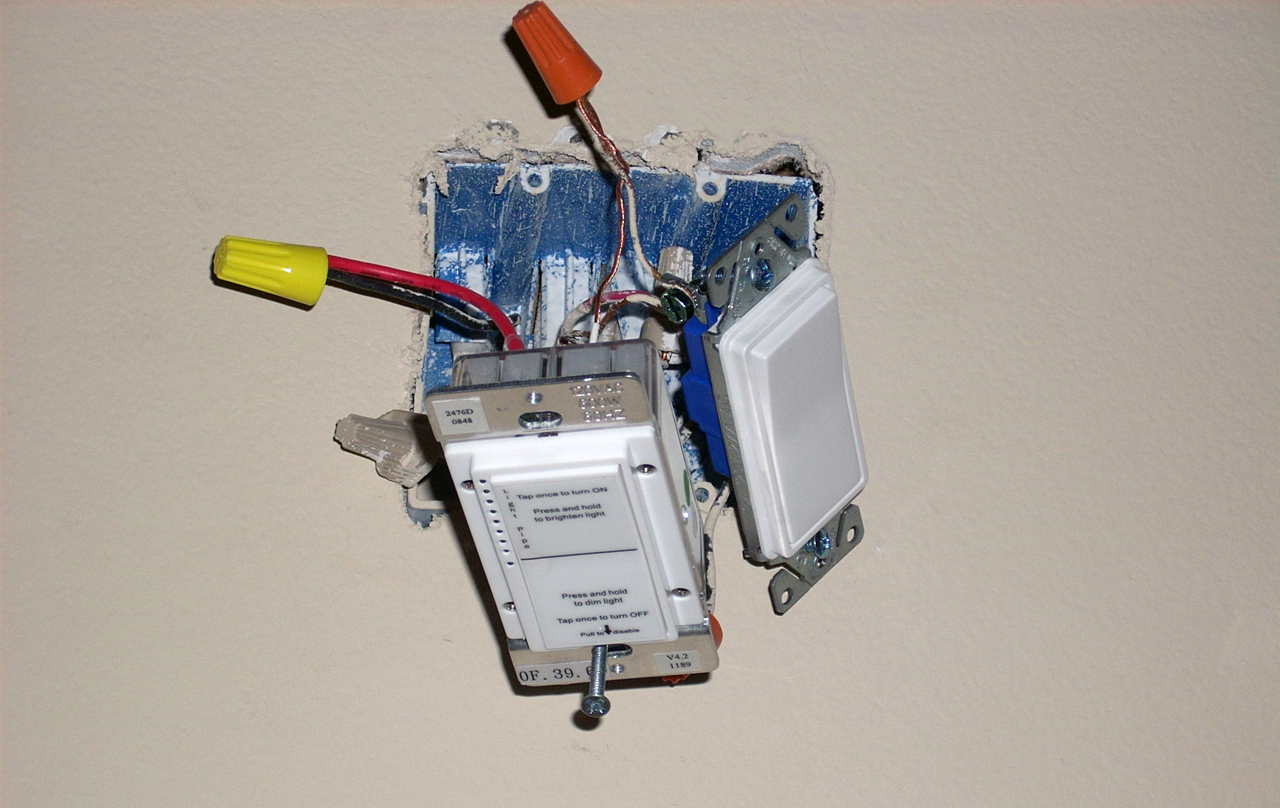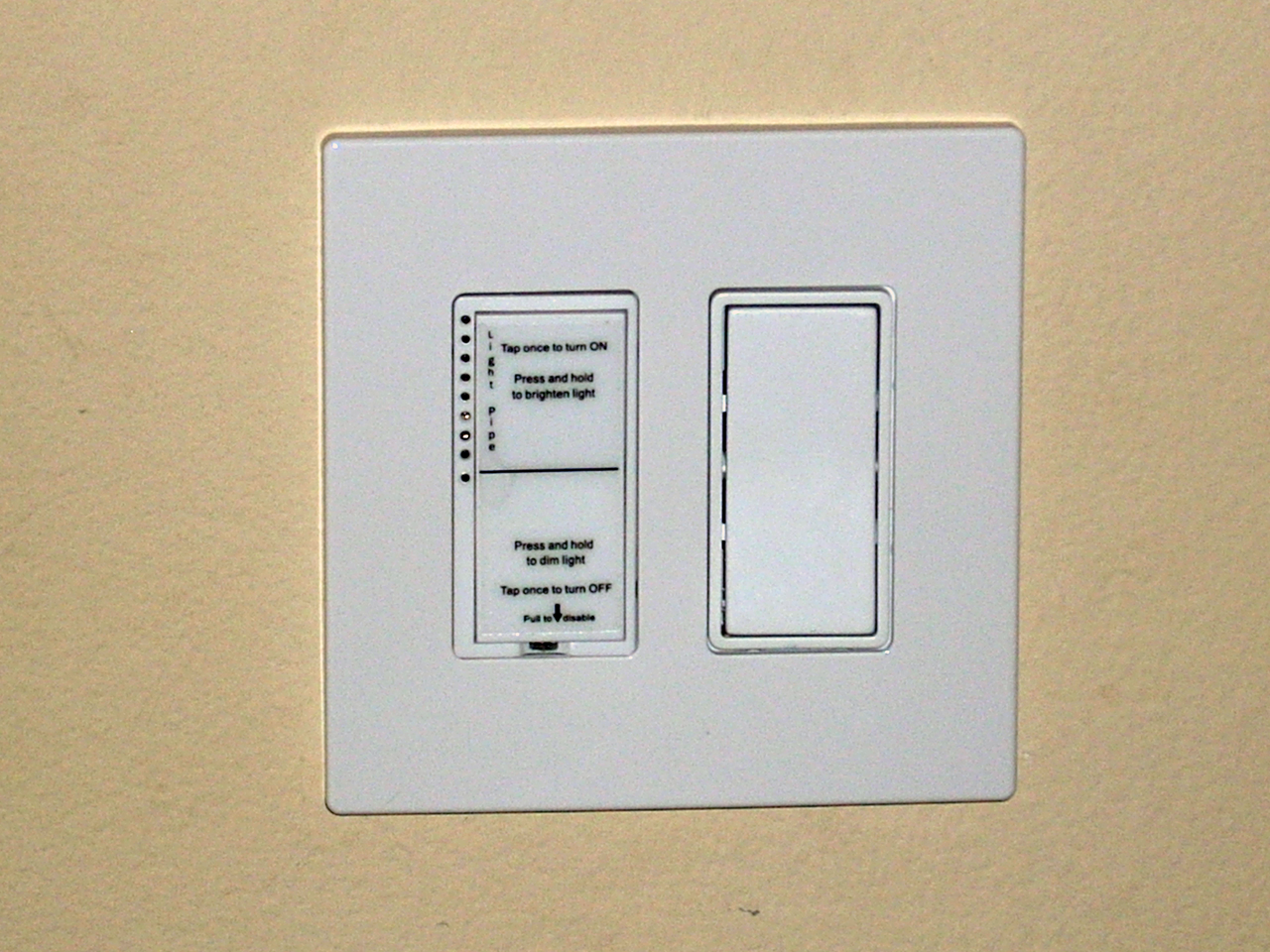Reader's Voice: An Introduction To Home Automation
Installation: The Fun Part?
I have to warn you that, depending on your state, county, and local laws, you may need to hire a licensed electrician to legally replace light switches/power receptacles or any structural wiring additions to those components.
Let's begin by replacing a light switch.
The first thing you want to do is identify the breaker box circuit being used in the switch box. It makes it easier if you or someone else has already pre-labeled your breaker panel. If you don't know which switch box belongs to each breaker, you can try the flip and test routine. Flip a breaker off and see if the switch still works. If it does, then go back and try another breaker. Be sure that everything in that switch box is actually turned off before you go digging around in it. You can use a voltage detector (found at any hardware store) to double-check that the box is dead, but check it on a live circuit first so you know that it's working.
Other than the voltage detector, I didn't use any specialized tools.
Here we have a "before" shot of the light switch.
You'll want to read the directions so you know about the wiring beforehand, but it makes it easier if the original wiring was done properly. You'll notice that I have a red wire connected to a black wire in the picture. Red and black don't mean the same thing in AC wiring as they do in DC wiring. Generally, the black is the load wire and the red is the runner (which takes the load to the next device in the chain for a three-way switch), but they are easily interchangeable (and sometimes need to be) to get a load to the right switch. Green is the ground wire, but is often just a bare copper wire. White is neutral (hot) and is sometimes in the back of the switchbox. In many older homes, it's not in the switchbox at all. When the neutral wire is not in the switchbox then it was run directly to the light fixture; that's likely a sign that your home's electric could stand to be re-wired, and you may want to talk to a licensed electrical contractor to at least have them take a look.
I'm also changing out the other switch in the box to the “Decora” style to match the Insteon switch.
Get Tom's Hardware's best news and in-depth reviews, straight to your inbox.
If possible, you should try to do your work such that only one conductor is exposed at a time. The rest should be in wire nuts or connected to terminals.
Since I was changing to Decora style anyway and had to change coverplate, I spent the extra money for the plates that hide the screws.
Hidden screw plates leave a much cleaner look.
Current page: Installation: The Fun Part?
Prev Page The Hardware Arrives Next Page Getting The Lighting System Running-
Gin Fushicho Sounds like a lot of fun, though my Grandpa wouldnt like it , he likes to work too much. =/ He might like setting it up though.Reply -
Twoboxer IMO, the problem with "Home Automation" is thatReply
(a) it's fragmented
(b) most applications can be accomplished in most homes with less expensive, individual systems than with any integrated system - even if one existed.
HVAC: Unless you have a large home requiring multiple HVAC zones/thermostats, and unless parts of the home are unoccupied for varying amounts of time, a programmable thermostat is an adequate solution. Setbacks (eg while you are at work) don't seem to save much money with modern HVAC systems in most US climates.
Lighting: If "security" means cycling lights so the house looks occupied, again simple timers are adequate. Unless you have a large, multi-source lighted home, few need automated lighting and "scenes".
Irrigation: If you have any sprinkler system, once again timers and rain sensors do the job well enough.
And so on.
FYI, I have a large primary residence with a networked security system that also controls multiple thermostats. A dedicated PC has replaced a stand-alone DVR to monitor security cameras. A low-voltage, microprocessor controlled system controls lighting.
If these 8-year old systems talked to each other well, maybe I could use the motion detectors to automatically turn lights on and off. And maybe I wouldn't be better off using standard internet cameras to monitor security as I travel between homes.
Its all cool technology, but as a substantial user and tech-lover, I just don't see significant, practical application in most homes. -
Twoboxer Please forgive the double-post, but I couldn't resist pointing out one savings I learned about from all of this.Reply
I use a lot of 130V bulbs in the fixtures controlled by microprocessor controlled lighting system. Most of these bulbs are also oversized for their purpose, and are therefore set to run at, eg, 60% or 75% of maximum voltage when turned on.
I don't know whether I've saved any electricity or not - I doubt it lol - but I have saved a tremendous amount of money on bulbs. EG, there are 11 such bulbs in my kitchen ceiling and they run a minimum of 12 hours per day. I have not replaced a bulb in that set since they were installed over 8 years ago. -
mrubermonkey Buying proprietary systems is bad. Go with equipment that goes by industry standards and the whole issue with home automaton being a long-term investment goes away for the most part. Unless some company's proprietary technology always leads industry standards by leaps and bounds, but this is rare.Reply -
pratik77 If you want the real deal, go for Crestron.Reply
Sure it costs money but so does liquid nitrogen cooled overclocked gaming rigs. -
On the life of light bulbs . . . .Reply
Lamp life is very sensitive to operating voltage - for 120 volts Ge quotes 125 volts as shortening the lamp life to 1/2 and 130 volts to 1/3. The inverse is true - if you put a 130 volt lamp in a 120 volt circuit you can expect over double the lamp life, and if you have a dimmer to soft start then it can last a way lot longer.
http://www.gelighting.com/na/business_lighting/faqs/incandescent.htm -
How can you not mention http://www.CocoonTech.com, the largest DIY home automation site out there.Reply
-
sublifer cocoonerHow can you not mention http://www.CocoonTech.com, the largest DIY home automation site out there.It was mentioned on page 3:Reply
Many of the searches for further guidance landed me at cocoontech.com, and reading other people's guides and questions helped me through the process.
